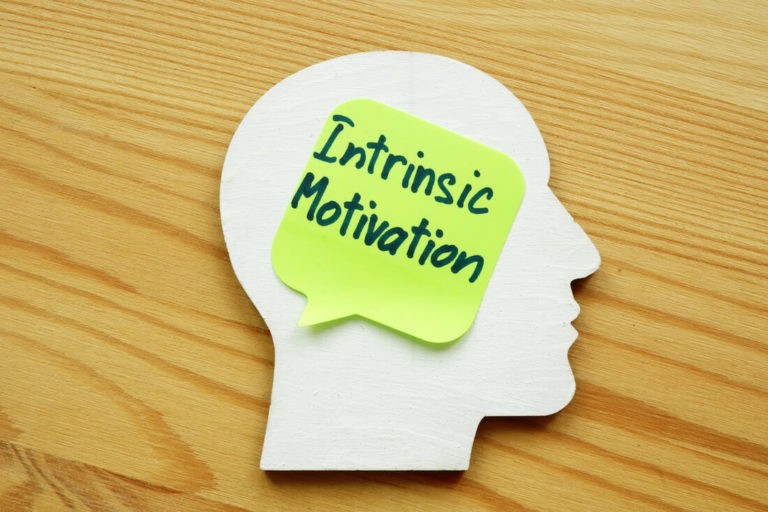What is Intrinsic Motivation?
“The term intrinsic motivation refers to energizing behavior that comes from within an individual and develops due to an inherit interest in the activity at hand” (Chaudhuri, 2019). According to Gottfried (2019),
Academic intrinsic motivation is an enjoyment of school learning, and performance of activities for students’ own sake, in which pleasure is inherent in the activity itself. It is characterized by an orientation toward mastery; curiosity; persistence; task-endogeny; and the learning of challenging, difficult, and novel tasks. (p. 71)
When students believe in their learning interests and are able to perform academic tasks without external factors or promises of tangible objects or favors in exchange for work completed, they are intrinsically motivated. These students also have a sense of self-efficacy that propels them to achieve their goals. They are goal-oriented, self-driven, and normally do not work for instant validation from peers or educators. Intrinsically motivated students are usually high performers and can master personal and academic goals with minimal support or encouragement from others.
Students who are excited about learning and contribute to the classroom culture in a cheerful and compliant way are generally intrinsically motivated. Furthermore, they automatically take an interest in the curriculum without having to be prompted. Intrinsic students know their purpose for education and are determined to be successful. They are deep thinkers and problem solvers. Intrinsic students have a growth mindset and look forward to learning that is challenging and self-gratifying.
Benefits of Promoting Intrinsic Motivation
Intrinsic motivation can be beneficial to both students and educators. The most powerful skillset an educator can have is to promote intrinsic motivation in all students. Some students arrive to school with the skillset, and others need to be taught. Everyone can experience intrinsic motivation when they give themselves permission to do so. When all learners exhibit intrinsic motivation, classrooms become safe havens for learning. Students experience success by collaborating and supporting their learning and the learning of their peers as well. Productivity increases and inevitably all learners contribute to the culture of the classroom through collective efficacy when intrinsic motivation is present. Students tend to perform academically well and thrive when they are intrinsically motivated.
Classrooms and schools with a high number of intrinsically motivated students and educators tend to have a positive culture and climate. Educators are able to focus on instructional strategies to best help students work at deeper and more complex levels, rather than dealing with nuisances of discipline issues, low performance, and the possibility of having a limited number of instructional resources. Professional development for staff is also more productive and conducive to increasing rigor for all learners. External barriers do not plague learning environments when there is a high level of intrinsically motivated learners.
Strategies for Promoting Intrinsic Motivation in the Classroom
Educators must intentionally create learning environments that encourage and promote intrinsically motivated students. Allowing students to take risks and explore learning through the natural process of inquiry yields a safety net of trust. According to Purnomo, Kurniawan, & Aristin (2019), “Intrinsic motivation can be enhanced in the classroom by providing a challenge, curiosity, fantasy, and control” (p. 263). Educators should allow student choice to maximize learning potential based on their interests.
Administering an interest survey is a great way to identify factors that directly provoke intrinsic motivation in students. Then the data can be used to plan effective instruction and to improve the classroom learning environment. For example, if educators know of a student who wants to be an astronaut, and his or her eyes light up every time space is mentioned, it is the educator’s duty to find resources and literature about space to continue to help the student exude intrinsic motivation when completing tasks.
According to Purnomo, Kurniawan, & Aristin (2018), some additional strategies educators can use to increase intrinsic motivation of learners are to:
- Challenge learners by assigning tasks at a gradual difficulty level from very easy to very difficult,
- Use the students’ own personal experiences to arouse curiosity,
- Use fantasy/imagination as a strategy to stimulate the thinking power of learners beyond the current conditions,
- Improve learners to become active participants in learning,
- Provide assessment feedback and use praise that rewards effort and improvement, and
- Be supportive and attentive to learners. (p. 263)
Educators who take the time to know students and acknowledge the factors that intrinsically motivate them contribute to their overall success in the classroom.
Conclusion
Intrinsic motivation is important to the overall well being of all students, and they need to feel the autonomy of having ownership of their overall learning goals (Blankenstien, Saab, van der Rijst, Danel, Bakker-van den Berg, & van den Broek, 2019). Students are most creative when they can tap into their personal skillsets and apply them to new learning. Students who are intrinsically motivated tend to maximize their learning to their fullest potential and are highly innovative. Implications for further studies are to determine how intrinsic motivation affects students in different regions and educational settings, and to explore how intrinsic motivation directly or indirectly impacts teacher performance.




